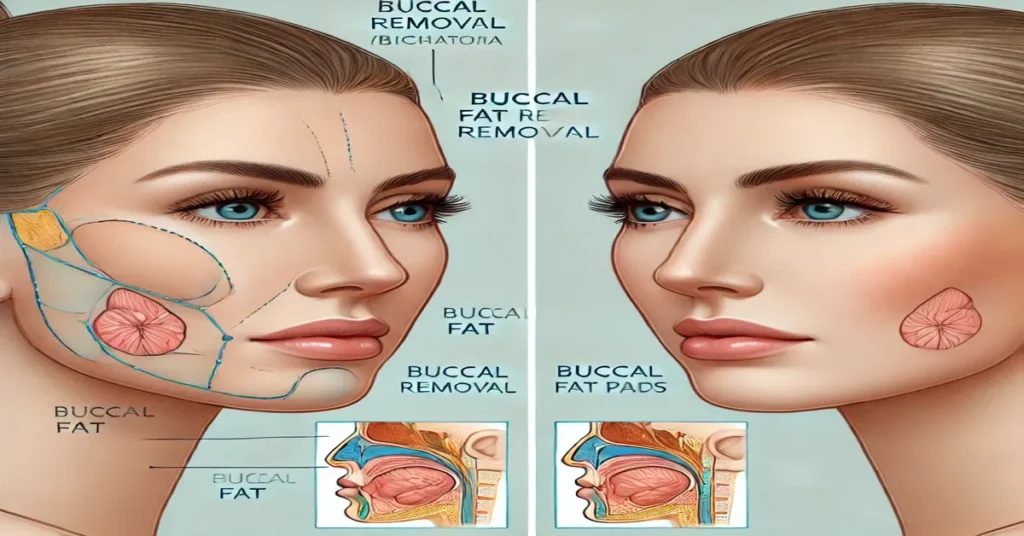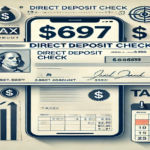In the world of cosmetic surgery, the pursuit of facial contouring and enhancement continues to grow. Among the trending procedures, “bichectomia,” commonly known as buccal fat removal, has gained attention for its potential to give a slimmer, more defined face shape. Originally popularized in Latin American countries, this procedure is now sought worldwide by individuals looking to enhance their facial aesthetics.
This article will provide a comprehensive look at bichectomia, covering its history, purpose, procedure, benefits, risks, and recovery process. We’ll also discuss the ideal candidates for buccal fat removal and what patients can expect in terms of results. Finally, we will address frequently asked questions to clarify any concerns potential patients may have.
Table of Contents
- What is Bichectomia?
- The History and Rise of Bichectomia
- Who is an Ideal Candidate for Bichectomia?
- The Bichectomia Procedure
- Benefits of Bichectomia
- Potential Risks and Complications
- Recovery and Aftercare
- Expected Results and Longevity
- Conclusion
- FAQs
1. What is Bichectomia?
Bichectomia, or buccal fat removal, is a cosmetic procedure that involves the removal of fat pads located in the cheeks. These pads, known as buccal fat pads, are positioned in the mid-face area between the cheekbones and jawline. Their size varies from person to person and is often determined by genetic factors.
The goal of bichectomia is to create a slimmer, more contoured facial appearance by reducing the fullness in the cheeks. This results in more prominent cheekbones and a better-defined jawline, giving the face a more chiseled and sculpted look. Although this procedure was initially more common in countries like Brazil and Mexico, its popularity has spread across the globe as more people seek sharper facial features.
2. The History and Rise of Bichectomia
Bichectomia has its roots in Latin America, where it became a common cosmetic surgery choice in the early 2000s. Many patients were drawn to the procedure’s ability to enhance facial structure with minimal scarring or visible marks, making it an appealing option for those who wanted subtle yet effective results.
Over time, buccal fat removal gained popularity as celebrities and influencers opted for the procedure, bringing it into the public eye. Social media platforms like Instagram and TikTok contributed to the spread of bichectomia awareness, with many people sharing their results and experiences online. The procedure’s association with the “model face” look—a face with high cheekbones and a defined jawline—further fueled its popularity.
Today, bichectomia is available worldwide and is sought by both men and women looking for a more sculpted facial appearance.
3. Who is an Ideal Candidate for Bichectomia?
While bichectomia can be a great option for individuals seeking facial contouring, it’s not suitable for everyone. Ideal candidates are those who:
- Have full, rounded cheeks: People with naturally fuller cheeks or a rounder facial shape may benefit the most from buccal fat removal, as the procedure can create a more angular appearance.
- Are in good health: Candidates should be physically healthy and have no underlying conditions that could interfere with surgery or healing.
- Have realistic expectations: Bichectomia can enhance facial features, but it cannot drastically change the shape of a person’s face. It’s essential to have realistic expectations about what the procedure can achieve.
- Are at a stable weight: Significant weight fluctuations after surgery can impact the results, so it’s recommended that candidates maintain a stable weight.
- Understand the permanence: Once the buccal fat pads are removed, they cannot be restored. Therefore, patients must be sure about their decision to undergo this irreversible procedure.
Patients who are not ideal candidates include those who already have a naturally slim face, as removing more fat could lead to an overly gaunt appearance over time. Additionally, older patients may need to consult their doctor to ensure the procedure will not lead to an unintended hollowing of the face, which could exacerbate signs of aging.
4. The Bichectomia Procedure
Preparation
Before undergoing bichectomia, patients will typically have a consultation with a board-certified plastic surgeon. During this consultation, the surgeon will assess the patient’s facial structure, discuss goals, and provide information on what to expect before, during, and after the procedure. Patients may be asked to refrain from certain medications and to follow specific dietary restrictions before surgery.
Procedure Steps
Bichectomia is generally a straightforward outpatient procedure that can be completed in about 30 to 45 minutes. It is typically performed under local anesthesia, though some patients may opt for sedation if they prefer.
- Incisions: The surgeon makes a small incision inside each cheek, typically between the molars and the buccal mucosa (inner lining of the mouth). This approach prevents visible scarring.
- Fat Pad Removal: Through the incision, the surgeon carefully locates the buccal fat pad and gently removes it. The amount of fat removed depends on the patient’s desired outcome and natural facial structure.
- Closure: After the fat has been removed, the surgeon closes the incisions with dissolvable stitches, which will gradually dissolve over time as the cheeks heal.
5. Benefits of Bichectomia
Bichectomia offers several advantages, which have contributed to its popularity:
- Enhanced Facial Contours: By removing excess fat in the cheeks, bichectomia provides a more contoured appearance, highlighting the cheekbones and jawline.
- Minimal Scarring: Since the procedure is performed through incisions inside the mouth, there are no visible scars.
- Quick Procedure and Recovery: Bichectomia is a relatively quick procedure, often taking under an hour, and recovery time is usually short.
- Permanent Results: Unlike some non-surgical facial contouring methods, the results of bichectomia are permanent, as the buccal fat pads do not grow back.
- Boosted Confidence: Many patients report feeling more confident in their appearance after bichectomia, especially if they previously felt self-conscious about having a round face.
6. Potential Risks and Complications
As with any surgical procedure, bichectomia carries some risks, though they are relatively rare when performed by a qualified professional:
- Infection: Since incisions are made inside the mouth, there is a risk of infection if proper aftercare is not followed.
- Asymmetry: Uneven fat removal can lead to facial asymmetry, which may require corrective surgery.
- Excessive Hollowing: Removing too much fat can result in an overly gaunt or aged appearance, especially as the patient ages.
- Nerve Damage: The buccal branch of the facial nerve runs close to the buccal fat pad, so there is a minor risk of nerve damage, though this is very rare.
- Prolonged Swelling: Some patients may experience swelling for several weeks after the procedure.
It’s crucial for patients to discuss potential risks with their surgeon and choose a certified professional to minimize complications.
7. Recovery and Aftercare
The recovery period for bichectomia is typically straightforward and relatively short compared to other surgical procedures. Here’s what patients can expect:
- Initial Healing: Swelling and minor discomfort are normal in the first few days. Pain can usually be managed with over-the-counter pain relievers and cold compresses.
- Dietary Adjustments: Patients are usually advised to stick to soft foods and avoid spicy or acidic foods that could irritate the incisions.
- Oral Hygiene: Maintaining good oral hygiene is essential to prevent infection. Patients may be given an antibacterial mouthwash to use regularly.
- Stitch Dissolution: The dissolvable stitches will usually dissolve on their own within 7 to 10 days.
- Full Results: While initial results are noticeable within a few weeks, it may take up to three months to see the final contour as swelling fully subsides.
8. Expected Results and Longevity
One of the main appeals of bichectomia is that it provides permanent results. Once the buccal fat pads are removed, they do not grow back, so patients can enjoy long-lasting changes to their facial structure. Over time, the slimming effect becomes more prominent as the remaining swelling subsides.
However, patients should remember that aging naturally leads to a loss of facial volume, which may affect the overall appearance as they get older. For this reason, some surgeons recommend being cautious about the amount of fat removed, especially in younger patients, to avoid excessive hollowing in later years.
Conclusion
Bichectomia, or buccal fat removal, has become a popular procedure for those looking to achieve a slimmer, more contoured facial appearance. By removing excess fat from the cheeks, this surgery enhances the prominence of the cheekbones and jawline, creating a more sculpted look. While the procedure is quick and minimally invasive, it’s essential for patients to carefully consider their goals and consult with a certified professional to achieve the best results.
As with any cosmetic procedure, understanding the potential risks and preparing for the recovery period is key. When performed by an experienced surgeon, bichectomia can provide safe and satisfying results for those seeking subtle yet impactful facial contouring.
FAQs
- What is bichectomia?
- Bichectomia, or buccal fat removal, is a cosmetic surgery that removes fat pads from the cheeks to create a slimmer, more contoured facial appearance.
- Is bichectomia a permanent procedure?
- Yes, the results of bichectomia are permanent as the buccal fat pads do not regenerate once they are removed.
- Who is a good candidate for bichectomia?
- Ideal candidates are those with naturally fuller cheeks who desire a more sculpted look. Individuals should be in good health and have realistic expectations.
- How long does recovery take after bichectomia?
- Initial recovery takes about a week, with swelling typically subsiding within three weeks. Final results can take up to three months.
- Are there risks involved with bichectomia?
- While rare, risks include infection, asymmetry, excessive hollowing, and nerve damage. Choosing a qualified surgeon minimizes these risks.
- How much does bichectomia cost?
- The cost of bichectomia varies depending on the location and surgeon, but it generally ranges between $2,000 and $5,000.







